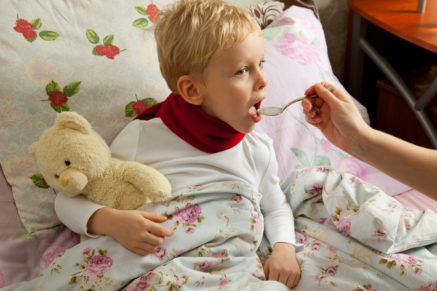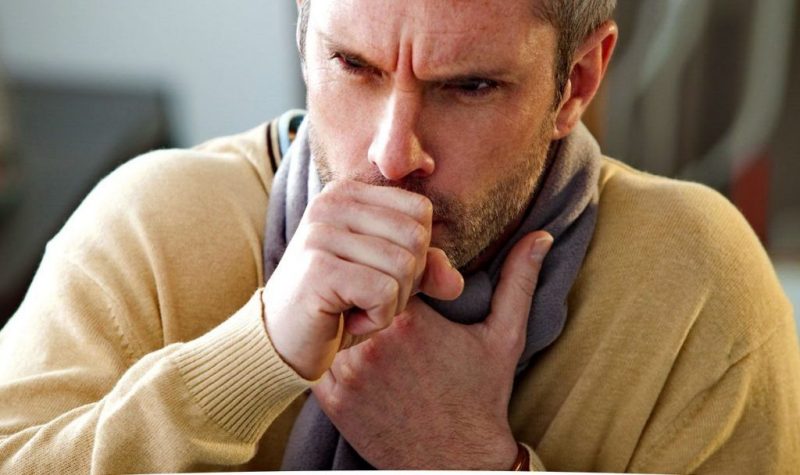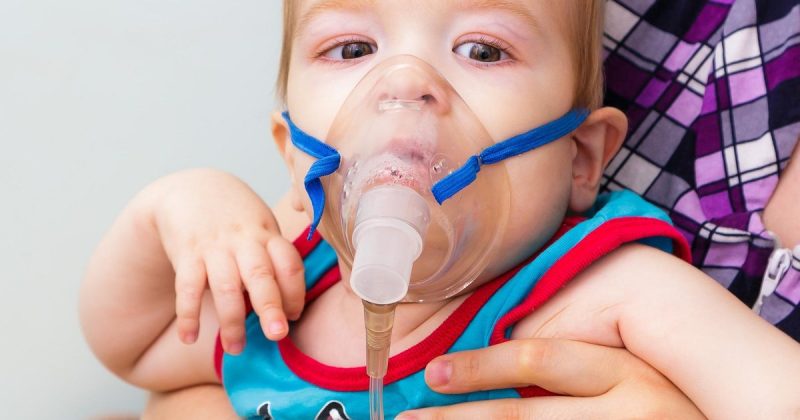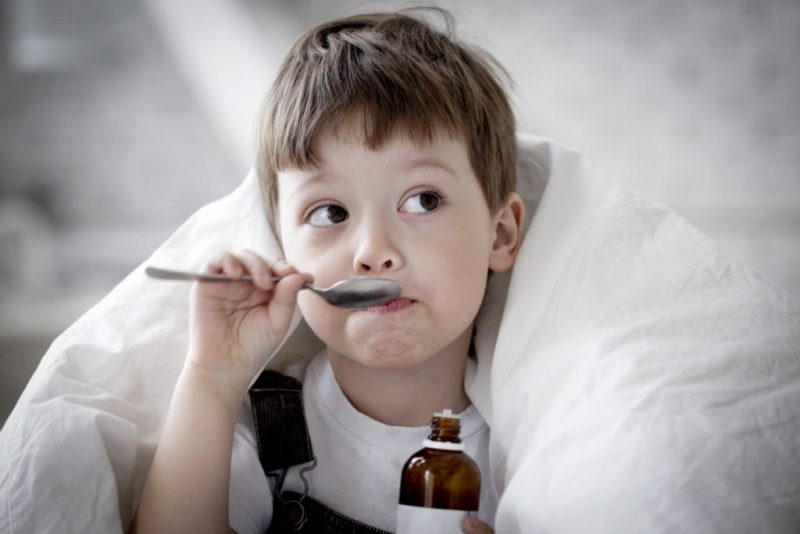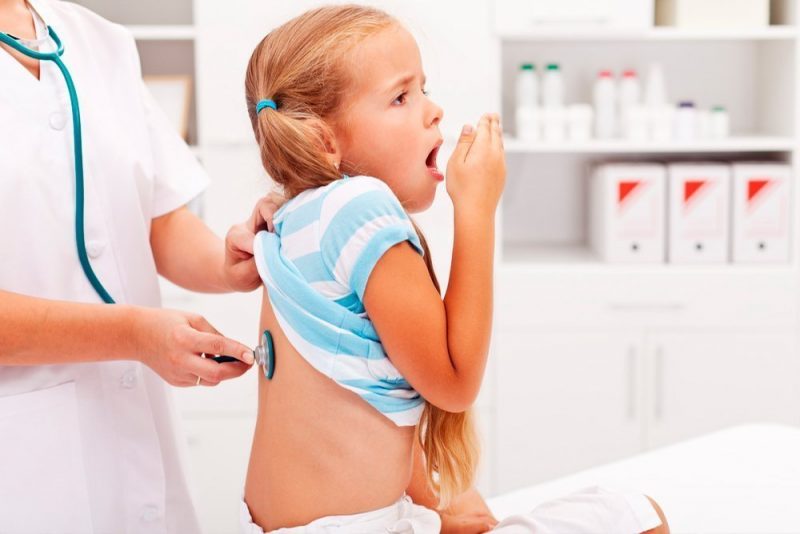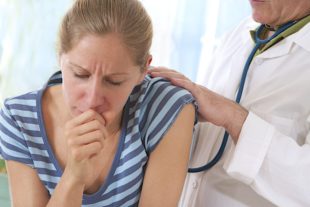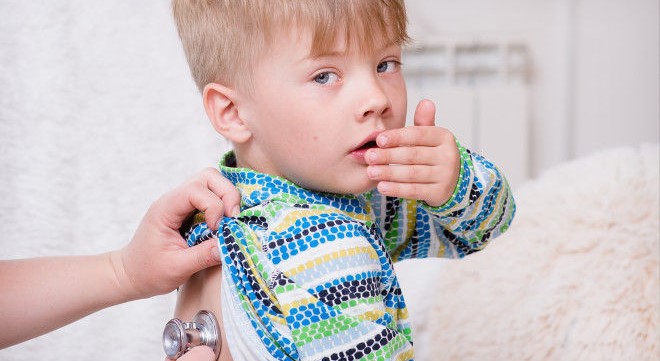Pneumonia (Pneumonia), which is also called pneumonia, is a disease of an infectious nature, proceeding against a background of pronounced symptoms. Pathogenic microorganisms localized in the organ have a destructive effect on it, affecting soft tissues. According to statistics, this disease ends in the death of the patient in 10% of cases in adults, and in 15% among children. To avoid the sad consequences, it is important to recognize the disease in time, and begin treatment of pneumonia.
Material Content:
Ways of infection with pneumonia and risk group
Most often, infections become the cause of pneumonia, and infection occurs by airborne droplets. But there are cases when the causative agent of the disease was transmitted by blood or lymph.
The risk of developing pneumonia in an adult increases with the following conditions:
- heart failure;
- endocrine disorders;
- chronic respiratory diseases;
- impaired immune defense;
- HIV infection.
In addition, the risk group includes smokers, people who use alcohol and drugs, bedridden patients, as well as patients who have had intubation in the recent past. The fact is that during lung ventilation with the help of special devices, the activity of the respiratory organs decreases, and this can lead to the development of the inflammatory process.
The likelihood of pneumonia in children increases under the influence of the following factors:
- intrauterine infection;
- birth injuries;
- congenital heart defects or disorders affecting the respiratory system;
- frequent colds;
- recent otitis media or bronchitis;
- weakened immune defenses;
- oncological diseases.
And also at risk are babies living in ecologically unfavorable regions or inappropriate conditions when the principles of housing hygiene are not respected.
Is pneumonia contagious to those around you?
Since pneumonia occurs by airborne droplets, it can be transmitted from one person to another. In this case, the degree of danger depends on the reason why the disease arose.
When pneumonia is a secondary disease and develops as a complication of influenza or SARS, the chance of infection from such a patient is very small. Another thing is if the disease is primary, and in the human body there are active bacteria that provoke pneumonia in high concentration.
In addition, the degree of risk depends on the state of immunity. If it is weakened, the likelihood of infection by contact with the patient increases.
Types and classification
Pneumonia occurs as a result of the multiplication of pathogenic microflora concentrated in the respiratory organs. Depending on the pathogens, it can be:
- bacterial;
- viral;
- parasitic;
- fungal.
In addition, the disease is divided into typical and atypical. The first is caused by pneumococci and viruses, and the causative agents of the second are atypical organisms, such as chlamydia, legionella or mycoplasma.
And also pneumonia happens:
- primary, arising as an independent violation;
- secondary, developed against the background of a disease;
- aspiration, the cause of which are microorganisms that have penetrated the respiratory system with vomit and foreign objects;
- postoperative, arising as a complication;
- post-traumatic, developed due to lung damage.
According to severity, pneumonia is divided into the following types:
- light, proceeding against the background of mild symptoms.
- average, when signs of the disease are obvious, but there are no complications;
- severe, with severe intoxication and impaired functioning of other organs and systems.
Attention! If patients with mild or moderate pneumonia can receive treatment at home, in severe forms of the disease, hospitalization and constant medical supervision are necessary.
Primary signs of the disease
The primary symptoms of pneumonia in adults and children are similar to manifestations of other diseases affecting the bronchopulmonary system. At the initial stage, there are such signs:
- prolonged bouts of dry cough;
- a slight increase in temperature;
- dyspnea;
- general weakness;
- excessive sweating;
- nausea and other manifestations of intoxication (sometimes).
On a note. In some cases, the symptoms of pneumonia are mild, the temperature is absent, there is only a slight cough, decreased appetite and increased fatigue. With this form of the course of the disease, it can only be diagnosed by X-ray examination.
Symptoms and clinical presentation
As the disease develops, the symptoms increase, and the following changes are observed in the patient’s well-being:
- the temperature rises and keeps within 38-40 degrees;
- the cough transforms from dry to wet, with sputum discharge;
- chest pains appear, aggravated by inspiration;
- shortness of breath occurs even during slow walking, heavy breathing, with wheezing;
- the activity of the sebaceous glands increases, the patient periodically “throws into a cold sweat”;
- vitality is reduced, a feeling of loss of strength is constantly present.
In addition, intoxication symptoms, headaches and loss of appetite can join the listed symptoms of the disease.In children and elderly patients, fainting and blurred consciousness are often noted.
Diagnostics
In the process of diagnosing pneumonia, it is necessary not only to assess the severity of the disease, but also to identify the cause of its occurrence. For this, the following events are held:
- examination by a general practitioner;
- blood tests for white blood cell count;
- blood chemistry;
- general research and bacteriological culture of sputum;
- chest x-ray;
- CT and MRI of the lungs.
When making a diagnosis, it is important to differentiate pneumonia from other diseases that have similar symptoms. These include malignant and benign tumors in the respiratory organs, as well as tuberculosis.
Treatment of pneumonia in adults and children
A comprehensive approach is needed in the treatment of pneumonia, it includes taking a number of drugs, physiotherapeutic procedures (inhalation, UHF, electrophoresis and others), massage and therapeutic exercises. In addition, the patient requires bed rest, plentiful drinking and easily digestible food. In this case, the room in which the patient is located must be regularly cleaned and ventilated, and the air humidified.
Drugs and antibiotics
Treatment of pneumonia with antibiotics is aimed at the destruction of pathogens. As part of therapy, the use of the following types of drugs from this group is indicated:
- aminoglycosides;
- carbapenems;
- lincosamides;
- macrolides;
- penicillins of semisynthetic origin;
- fluoroquinolones;
- cephalosporins.
The duration of treatment with these agents is from 1 to 2 weeks. In addition, symptom therapy is carried out, within the framework of which the following types of drugs are used:
- antipyretic;
- expectorant;
- antihistamines;
- bronchodilators;
- immunomodulatory;
- anti-inflammatory;
- detoxification;
- vitamin complexes.
The selection of drugs is carried out, taking into account the nature and severity of the disease, concomitant diseases and individual characteristics of the patient.
Folk remedies for pneumonia
Together with drug therapy, pneumonia can be treated with folk remedies. As a rule, alternative methods are to take decoctions and tinctures based on such components:
- aloe and Kalanchoe are used to combat pathogenic bacteria;
- for the discharge of sputum use coltsfoot, licorice, thyme, St. John's wort and anise;
- to relieve inflammation, preparations are prepared with chamomile, calendula, pine buds, sage;
- to increase the body's resistance, ginseng, echinacea and eleutherococcus are brewed.
To speed up recovery, you need to enrich the cells with vitamin C. For these purposes, the use of citrus fruits, viburnum, elderberries, cranberries, ginger, onions and garlic is indicated.
In addition, ointments for external use are effective in the treatment of the disease. They are prepared on the basis of animal fats: badger, goose, sheep or bear.
Attention! It is impossible to cure pneumonia with decoctions and grindings, these are just auxiliary measures. Therefore, it is impossible to ignore the doctor’s prescriptions and refuse to take medications, therapy should be carried out comprehensively.
Possible complications
The duration of treatment and the outcome of pneumonia depend on the course of the disease and the presence of complications. If with a mild or moderate form, recovery occurs within 2-3 weeks, then in other cases it takes several months. The most common complications include the development of the following conditions:
- bronchitis;
- pleurisy;
- abscess or gangrene of the lung;
- pneumosclerosis;
- obstructive processes.
When pneumonia occurs in severe form, the following disorders may occur:
- acute heart and respiratory failure;
- liver activity disorders;
- infectious toxic shock;
- thrombohemorrhagic syndrome.
And also pneumonia can serve as an impetus for the development of such extrapulmonary complications:
- hepatitis A;
- meningitis;
- encephalitis;
- otitis media;
- endocarditis;
- myocarditis;
- anemia
- sepsis.
In addition, changes caused by exposure to harmful bacteria can affect the nervous system, as well as adversely affect the patient's mental state.
Preventive measures
To prevent pneumonia caused by pneumococcal bacteria, vaccination is carried out. As a rule, young children and people at risk are vaccinated. Used drugs form a stable immunity for 5 years, after which revaccination will be required.
In addition, a dangerous disease can be prevented if you adhere to the following rules:
- Lead a healthy lifestyle and give up bad habits.
- Timely treat chronic and infectious diseases.
- Temper and practice moderate physical activity.
- Avoid hypothermia.
- Observe housing hygiene by regularly cleaning and ventilating.
These measures will strengthen the body and increase immunity, which will significantly reduce the risk of infection. And if pneumonia does occur, it will help to avoid the development of complications.


